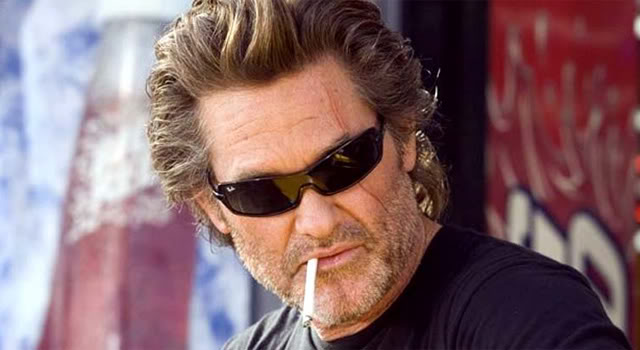
There’s a great shot during the first act of Quentin Tarantino’s latest film, Once Upon A Time… In Hollywood, which sees Brad Pitt’s now iconic stuntman character Cliff Booth arrive home to his modest trailer. In front of it, bursting with light and excitement, is the Van Nuys Drive-In Theatre, proudly declaring it’s double bill for the night, Lady In Cement and Pretty Poison. Not only is this another great piece of period detailing for its 1969 period, but a stark reminder of a vastly more exciting time in film exhibition, seeing the array of cars pile in before a huge screen on a cool night, joined in the communion of what ever is about to light it up.
While Drive-In theatres have become increasingly seldom seen over time, the COVID pandemic has actually seen them enjoy a slight resurgence across the globe, largely due to social distancing necessities. However, while 50 years ago it was an exciting experience to immerse an audience in, the programmes showing at them now, which simply roll out money making hits such as The Greatest Showman and Bohemian Rhapsody on repeat, have missed the point of what made this experience so great. It’s about the film community, the roar of the engines, and the idea that the open road can be one giant, engaging film set to send the audience’s imaginations flying.
The films below are not only road and car centric picks, but ones that celebrate the magic of filmmaking, and would make for perfect viewing outdoors, surrounded by fellow film fans under the night sky.
If the Drive-In experience is indeed going to see a resurgence, then these should be the films to kick it off with.
1. Targets (1968)
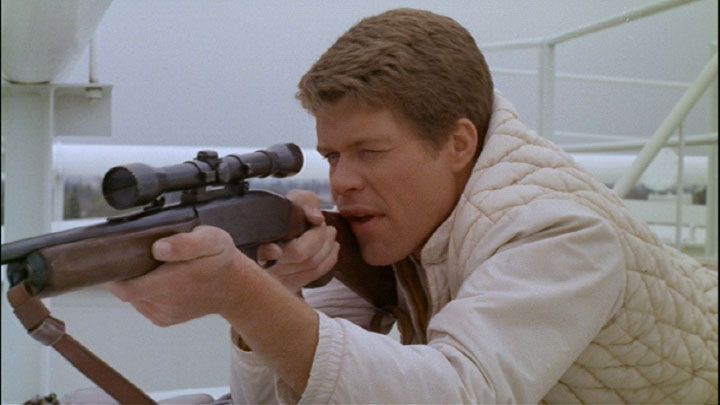
Roger Corman, the legendary film producer who has carried the moniker of ‘Pope Of Trash’ for over half a century now, isn’t particularly known for generating hard hitting, politically conscious films. But this Corman produced / Peter Bogdanovich directed gem, a frightening, relevant and engrossing film that kicked off the career of the celebrated filmmaker, displays a vastly different side. And the climax of this cinema-celebrating adventure being set at an actual Drive-In theatre is just the icing on the cake.
The film follows two storylines; one following ageing and disillusioned horror film star Byron Orlok (played with wry self awareness by real life horror icon Boris Karloff), and one about the eerily wholesome Vietnam war veteran Bobby Thompson (Tim O’Kelly). Just as Orlok is persuaded to attend a Drive-In screening before retiring, his story and Thompson’s collide in horrific ways as the latter is revealed to be a psychotic murderer out on a killing spree toward the same place.
Staging the frightening climax of the film at a Drive-In theatre not only makes it fitting for exhibition at one, creating an almost fully immersive mirror image of the audience, but, for a plot about escalating violence perpetrated by a skilled sniper, intensely haunting. In fact, the film’s constant juxtaposing of classic movie horror in the form of Orlok against the horrors of the day in the form of Thompson, escalates a sense of the horror and dread in the film that is so uniquely terrifying that audiences, especially those at a film lovers event such as a Drive-In, would undoubtedly be glued to the screen.
The character of Thompson is a sharp political commentary on the horrors of America’s involvement in the Vietnam war at the time, and after a series of similar real life mass shootings (the lethal 1966 University of Texas Tower Shootings were are particular touchstone), a stark reminder that the violence plaguing the country was infinitely more real and horrific than the films Byron Orlok made his name in.
The hard to predict plot, edge of the seat tension and gripping message aside, Targets utilises Bogdanovich’s love for the film industry with a great assessment of it at the time, especially on the advent of the Hollywood New Wave. This, mixed with the climax location, would make for a perfectly engrossing Drive-In movie experience, gripping film lovers in the most engaging way possible.
2. Hooper (1978)
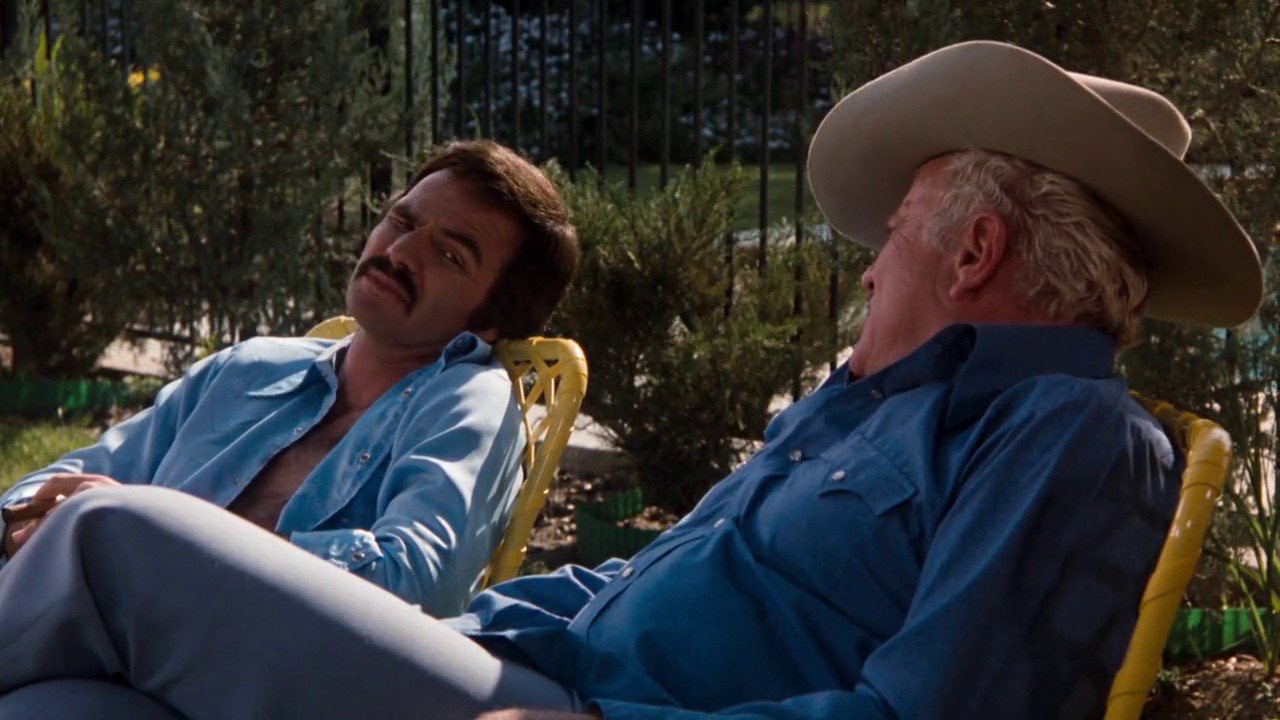
Carrying on with taking pride in the often unsung members of movie making process, this next film ticks that particular box and so much more in making it a hell of a thrill ride that would grab a Drive-In audience brilliantly. Concerning the lives, loves and struggles of stunt men on big budget features, the many environments made up of monolith-like sets and car stunt sequences almost form an extension of the Drive-In theatre surroundings, putting the audience right there in the film.
Sonny Hooper (Burt Reynolds) is a world class stuntman and coordinator at the top of his game, despite his culminating reliance on painkillers and alcohol. When his title is threatened by a daring newcomer Delmore (Jan-Michael Vincent), Hooper uses the film set to prove himself through increasingly dangerous stunts. When the picture’s director Roger Deal (Robert Klein) demands a near impossible gag, the stuntmen are put to the test.
Right from the word go, as you might expect, this action packed look behind the cinematic curtain is one hell of a ride. Directed by Reynolds’ own former stunt double, Hal Needham, the film is an absolute treat for fans of big spectacle. However, it is the time taken to shown the work going into each stunt that truly pulls the audience in, realising there are incredibly brave people and intricate planning behind the work, especially in a time when it couldn’t be replaced by CGI.
As well as this, Needham keeps the film from seeming like a senseless clip show of set pieces by centring it around rather well written characters. Though the type of doubts that plague Sonny are nothing new in a film like this, framing them in the exciting world of stunt work and filmmaking brings the audience in on two really engaging levels. However, no matter how dark the situation becomes, Needham manages to maintain a welcome atmosphere of lightheartedness throughout, with a great mixture of slapstick comedy and sharply written dialogue, making for a great watch with friends among a parking lot full of fellow movie lovers.
A Drive-In theatre would not only facilitate this unique cinematic experience for the fun wrapped up all through Hooper, but it’s reliance on film set locations would make the audience feel as if they are on set with them, with fellow cars becoming film crew vehicles as the action unfolds before them.
3. Red Rock West (1993)
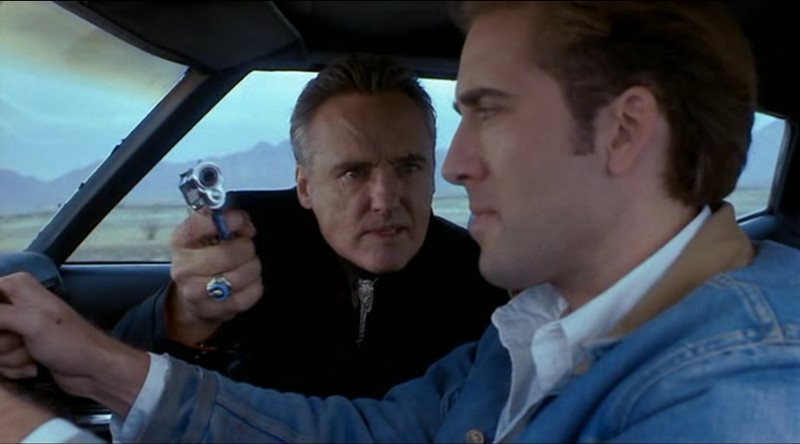
This next pick features key elements to any successful movie night; Dennis Hopper, the open road, and 90’s Nicolas Cage. However, aside from being a Wild At Heart-esque romp, this gripping western noir is an understated tour de force of acting, cinematography and storytelling. Taking place in rural Wyoming, this film would make for perfect viewing at a packed out Drive-In as the audience hang on to every twist in a similar environment to the one it is set in.
Living out of his car and running low on money, Michael (Nicholas Cage) wanders into a bar owned by Wayne (J.T. Walsh), who mistakes the drifter for a hitman he has hired to murder his wife, Suzanne (Lara Flynn Boyle). When Michael goes along with the case of mistaken identity, he runs into deep trouble when the actual hitman, ‘Lyle From Dallas’ (Dennis Hopper) arrives, and Suzanne turns out to be concealing more secrets than Michael himself.
Though receiving critical acclaim and a screening at the Toronto International Film Festival, the film slipped under the radar at the time of it’s release, after it was condemned to a direct-to-cable fate. Although it did make the cinema circuit in Europe and later in The States as an art-house picture, sadly, not many mention this brilliantly paced, twist filled noir, which is something that makes the film perfect for a Drive-In audience.
Director John Dahl’s utilisation of the open road very comfortably sets the scene and environment for the slowly unraveling story, yet never becomes an overbearing element and categorising it’s self as a road movie. Settings from Wayne’s bar to Suzanne’s house all manage to fit into the same milieu of this hazy western, so when there is nothing left for Michael but the open road, it’s a devastation for the character that hits home, an imagine that, when stared at by a film loving Drive-In theatre crowd, would set imaginations alight, especially in the midst of the twist filled web Dahl creates.
It’s a great shame this film didn’t pick up more momentum when it was released, despite big names in the cast and a great critical reception. Coming out as an art film would undoubtedly have put certain audiences off the film when it eventually saw the light of day in America, but if it had been seen at a Drive-In, perhaps the widely engaging nature of the plot twists and brilliant acting would’ve been realised.
4. Drive A Crooked Road (1954)
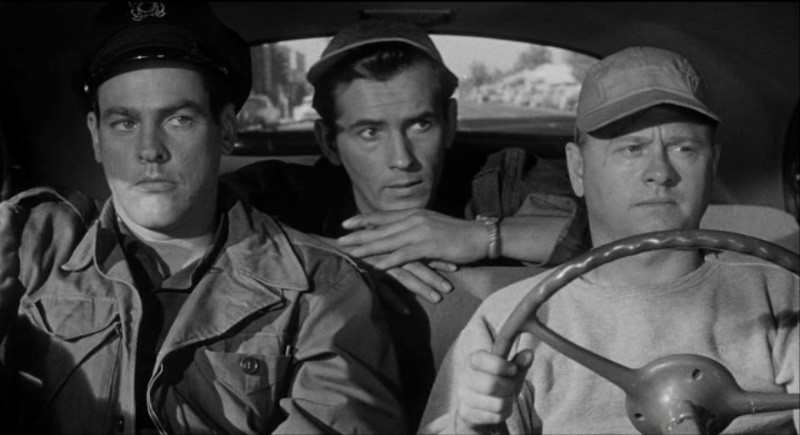
Another exceptional noir with enough excitement to get engines revving, this film is quite a subversive one to see comedy legend, Mickey Rooney, take the lead role in. It goes a way to beg the question of how he wasn’t cast in more dramatic roles, as his turn here is a perfectly pitched performance that keeps the audience hooked among the action, and no doubt one Drive-In audiences would connect with.
Sheepish race car driver Eddie Shannon (Rooney), far from well favoured by his colleges at the auto repair shop, often reminisces about his former life in the fast lane. So when the sensual and illusive Barbara Matthews (Dianne Foster) suddenly takes great interest in him, questions are raised. However, before they can be answered, Shannon is quickly embroiled in a heist by Barbara’s two friends, Steve (Kevin McCarthy) and Harold (Jack Kelly) in which he must utilise the skills from his former life, facing grave consequences if he doesn’t comply.
It’s a small, almost T.V.-serial-esque film that grabs the audience quickly with it’s slow burning plot, yet pays off cinematically in the end. It’s perfect for a Drive-In theatre, beginning with an exciting race scene that would be made all the more exciting surrounded by the cars of the audience. However, director Richard Quine doesn’t rely on these sequences as the hook for the film, and instead creates a truly engaging and oftentimes heartbreaking character study of Shannon, made all the more interesting by Rooney’s unexpectedly brilliant performance. Experiencing this great drama with fellow film fans, surrounded by a key aesthetic element of the film, would work to create a truly immersive experience.
However, when the actions sequences do come roaring by, the scenic shots of early 50’s Malibu that the cars rip through are a real treat. Coupled with the beautiful, film noir-appropriate black and white photography that would undoubtedly shine on a big Drive-In theatre screen, this part of California at the time the film was made was a hot bed of classic Drive-In venues, creating another level of immersion if shown at one today.
Drive A Crooked Road, despite it’s subject matter, is much more than a car centric nail-biter. Rooney delivers such an understated yet powerful performance at the centre of the film that is becomes an incredibly layered thriller, with an unpredictable plot that would have film audiences hooked.
5. Two-Lane Blacktop (1971)
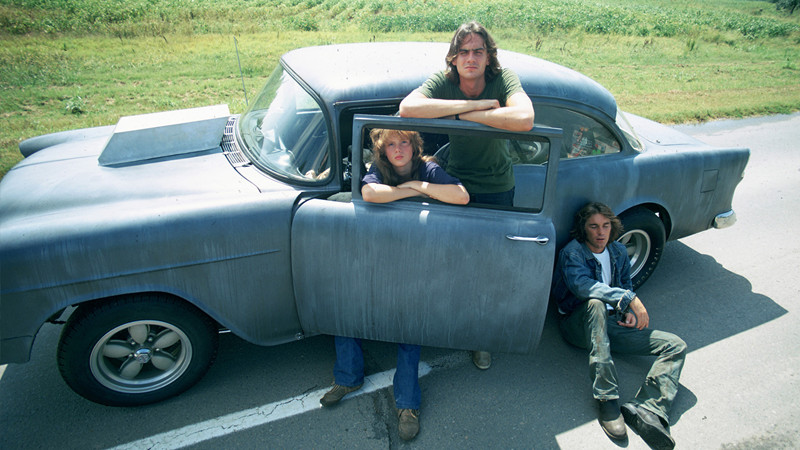
Along with many other now famous directors of the 1960’s and 70’s, the director of this next film, Mote Hellman, trained under legendary B-Movie producer Roger Corman, whose films famously attracted hoards of kids to the Drive-Ins at the peak of their popularity. So when Monte Hellman made his first film without any involvement from Corman, the existential road movie Two-Lane Blacktop, his skills were put to the test.
Following two unnamed street racers, known only as ‘The Driver’ (James Taylor) and ‘The Mechanic’ (Dennis Wilson) in their beat up 1955 Chevy 150, the film joins them as they compete for money across the country. After crossing paths with a stubborn driver known as ‘GTO’, (Warren Oates), a wager strikes up to race across the country to Washington DC for each other cars.
Following suit with the wildly popular youth orientated road movies of the time, Hellman’s esoteric classic has garnered a cult following in recent decades after a poor reception on initial release. It presented a much more introspective side to the genre, keeping the allegorical aspects of America’s culture war and perceived freedom, but following totally passive characters that were just as a lost as the dying breed of Flower Children they represented, left washed up from the now dead dream of the 60’s.
However, this more subtle approach to a film filled with roaring engines and car races still packs a punch, and one that would undoubtedly have Drive-In audiences fully immersed. Scenes as simple as Taylor and Wilson cruising into a motor lodge parking lot evoke the essence of a Drive-In; the buzz and excitement of a community, all brought together under one singular fascination. It works as a meta-layer to the film that could only be achieved at a Drive-In, with the unifying roaring of the engines and endless field of cars on screen, as well as the open road, creating a mirror image for the audience.
As well as this, Hellman’s unique approach to asserting the film’s point of view through as little dialogue as possible and ambiguous actions are another element that would have the collective audience on the back foot, trying to guess each next step. While the introduction of ‘The Girl’ (Laurie Bird), a hitchhiker that rides with ‘The Driver’ and ‘The Mechanic’ and creates a rift between them, is one of the closest things relating to a plot, it’s what Hellman doesn’t explain that works best for the film. A film that would be best experienced sitting in the very environment it’s set in.